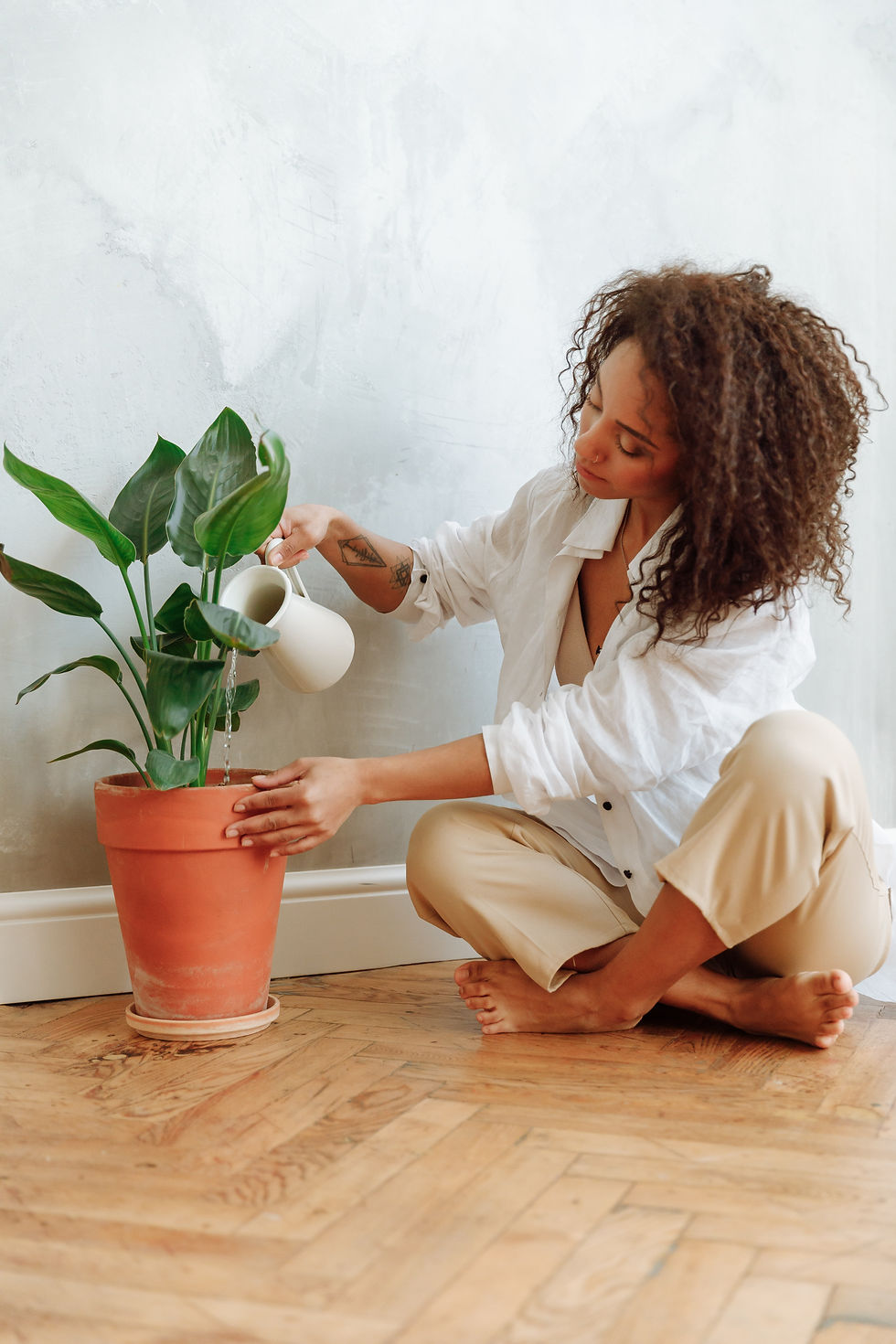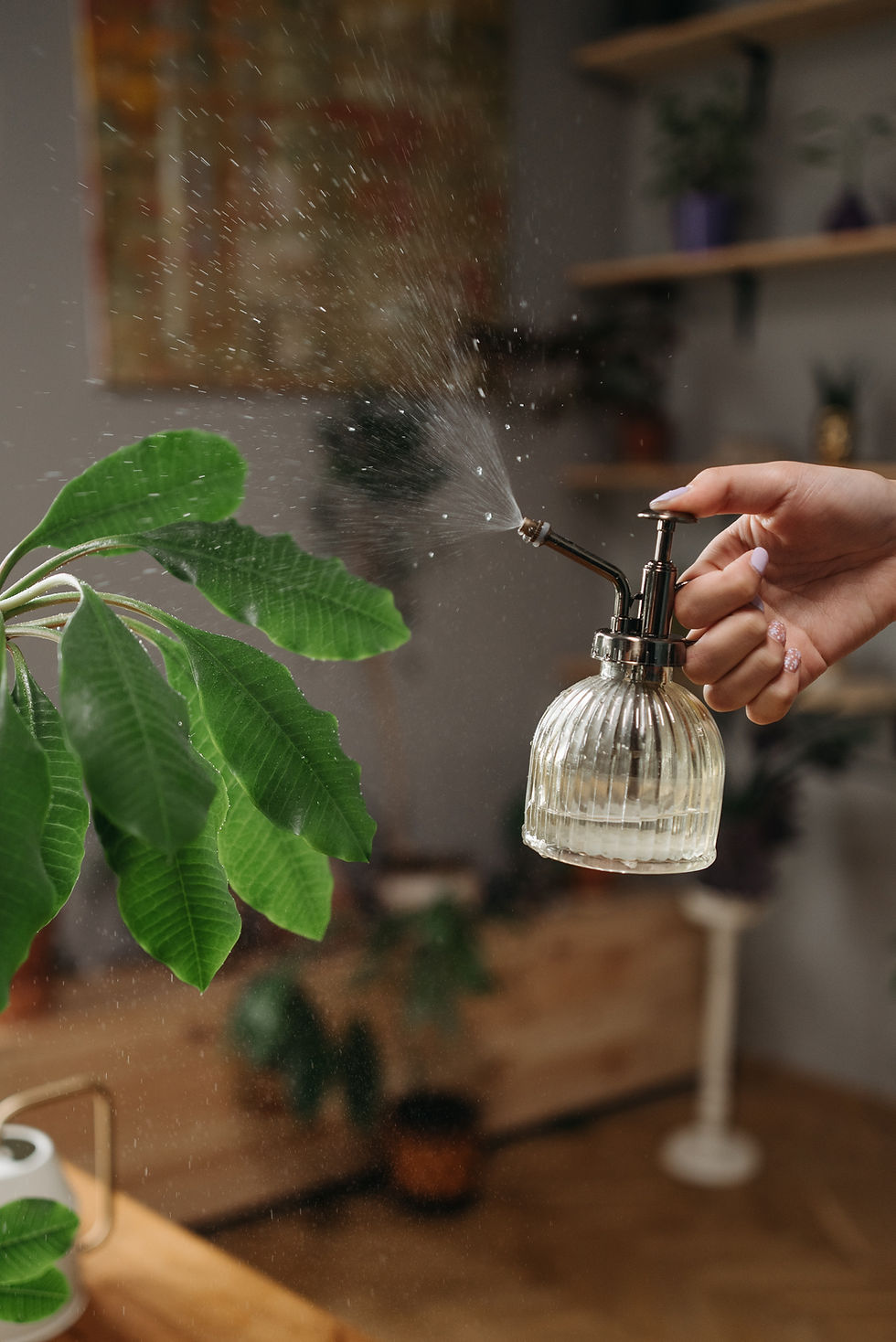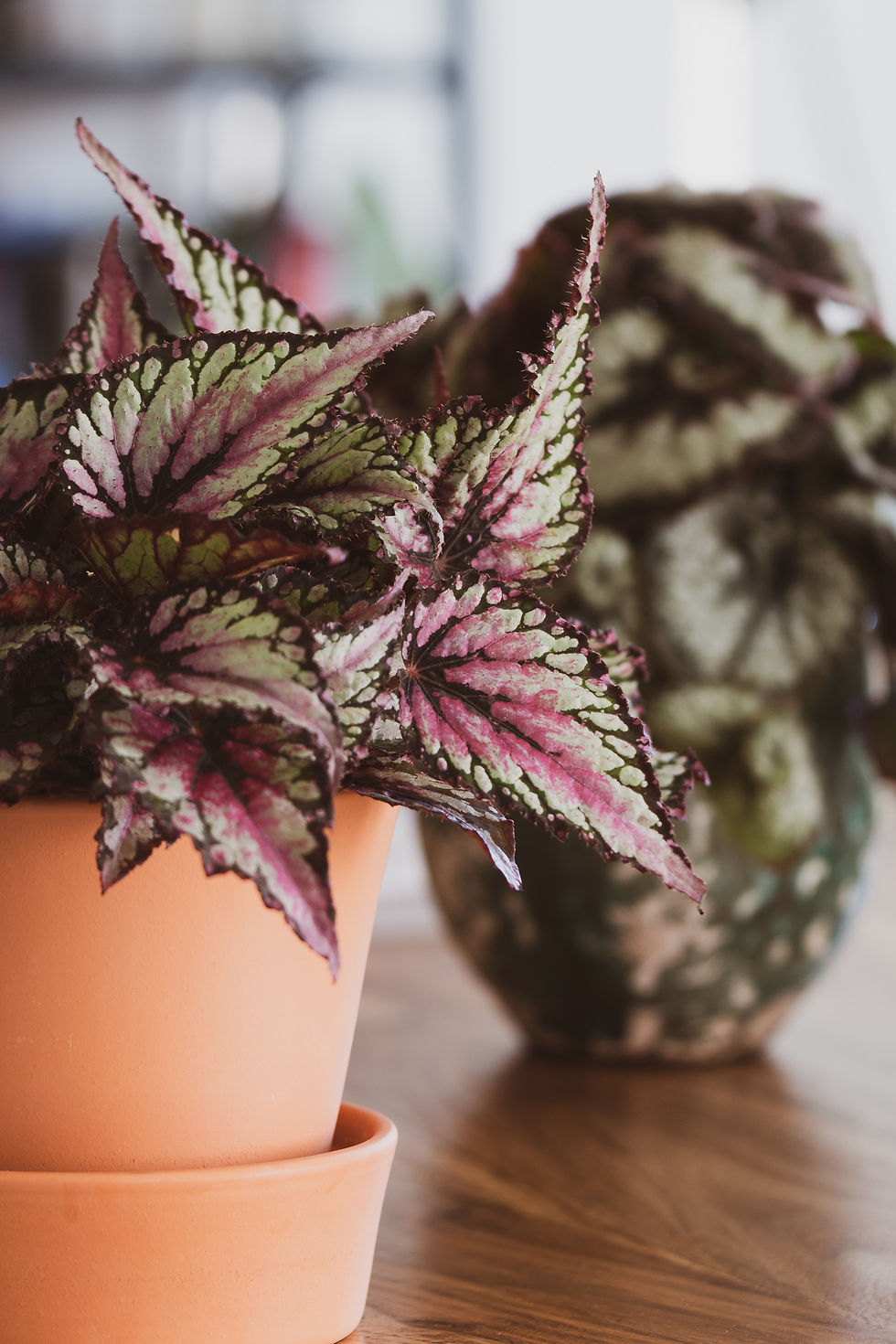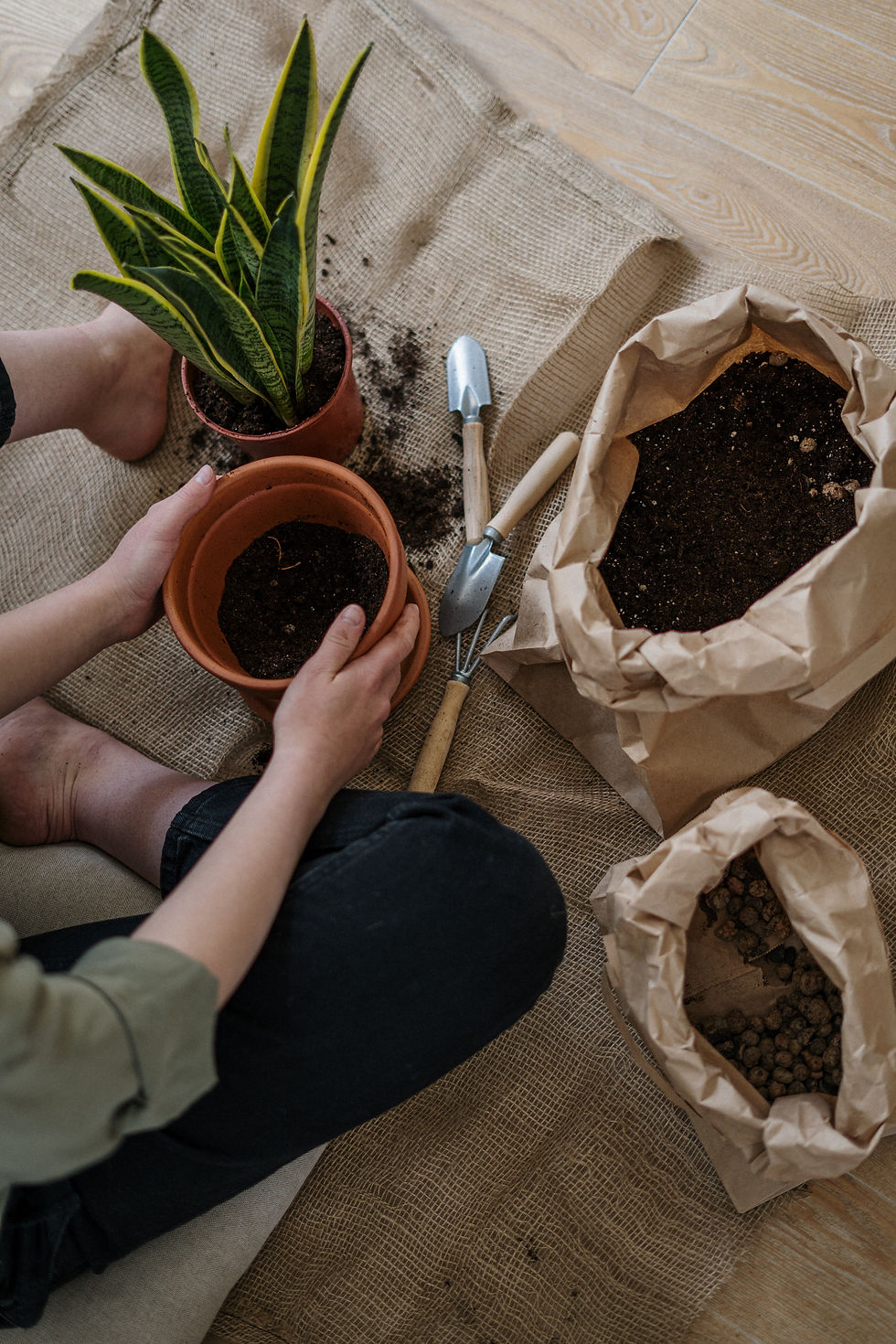Caring for Houseplants in the Fall
- Thorsen's Greenhouse

- Oct 7, 2022
- 3 min read
Though most plants live indoors, they are still affected by the change in seasons! For houseplants, Fall is the transitional time between the growing season and the dormant season. They are beginning to reserve energy for use in the winter, rather than continuing to push out new growth. Providing adequate care and support for your plants through the fall is essential to set them up for success through the winter! Follow these 5 simple steps to ensure your plant has a smooth transition.

Adjust Your Watering Schedule

In general, plants need less water through the fall and winter. Lower light and temperatures will result in your plant slowing growth, or not growing at all. Less growth means the plant needs less water! Make sure to check your plant's soil (you can use a wooden chopstick or dowel) and watch for signs that your plant needs water before you water it. Keep an eye out for drooping, wilting, and faded colors as good signs that your plant needs water! All plants are different, and the amount of water they need is largely based on their growing conditions. You might find that your plants water needs don't change, or you might be watering half as often as the summer.
Provide Additional Light
It's no secret that many plant parents struggle to provide enough light for their plants, especially in the fall and winter when the days are shorter. If you find that your windows just aren't providing enough light, consider adding an additional light source! This can be a plant-specific grow light, or a normal lamp with a full spectrum light bulb. Some signs that your plant wants more light are leggy growth, stretching towards the light source, one-sided growth, and small leaves.

Maintain and Increase Humidity
Most houseplants originate from tropical areas of the world, which naturally have high humidity! You want to replicate this as best you can for your houseplants to thrive. As we enter the cold months of the year, the cold air is naturally less humid than the warm summer air, so it is important to supplement the humidity levels in your home. Additionally, heaters and furnaces suck humidity out of the air, leaving your plants high and dry. The best way to increase humidity is to run a humidifier near your plants! This will provide a consistent stream of moisture into the air. You can also group plants together with pebble bowls, which provide humidity as the water evaporates!
Keep From Drafts & Heaters
We love getting warm and cozy in our homes, but your houseplants might not. Maintaining a consistent temperature for your plant is just as important as your light and water schedules. Most houseplants enjoy temperatures between 60 and 75F. Things like drafty windows or heating vents blowing on the plant can cause all sorts of problems. Make sure your plants are protected from drafts or cold windowpanes as well as keeping them away from heating vents or space heaters to prevent cold damage or excess drying.
Monitor for Bugs

Fall and winter are prime times for bugs and pests to breed! We don't like having pests in our space, and neither do your plants. Maintain a close eye on your plants to prevent possible infestations, and treat any signs of bugs as soon as you see them! While some pests, like fungus gnats, are not overly dangerous for the plant, they will be annoying to you! Take steps to prevent any pest infestations by treating your plant with neem oil or preventative insecticidal soap, as well as ensuring the plant does not sit in damp soil which is a breeding ground for flying insects.
Happy Fall, plant parents! The care your provide your plants during this transitional period will allow your plants to have a happy winter and continue growing for years to come!
Like this blog post? Find similar content using the tags below.





Comments